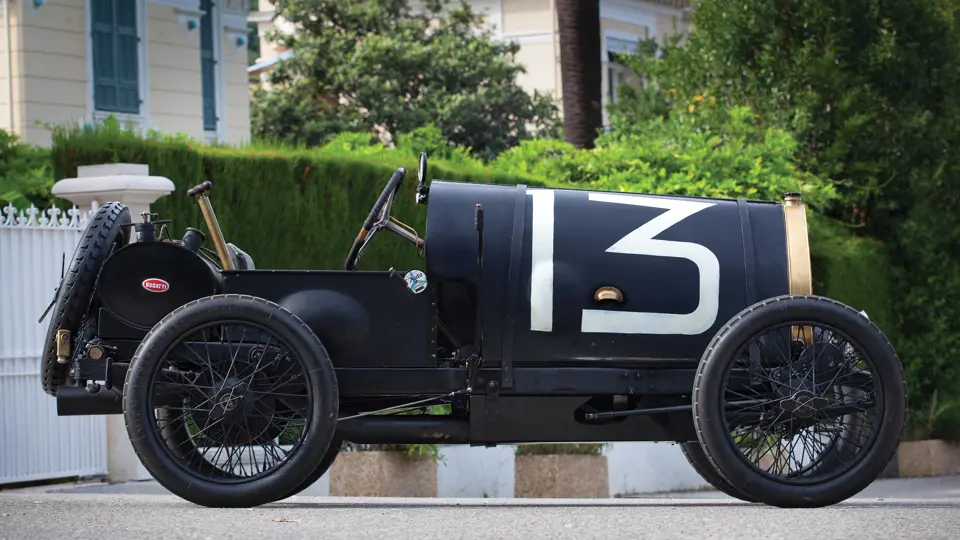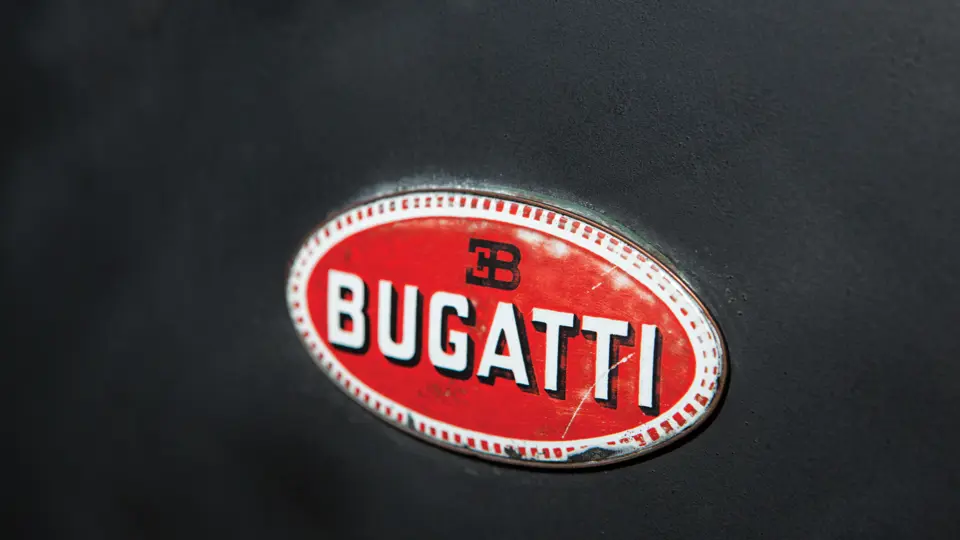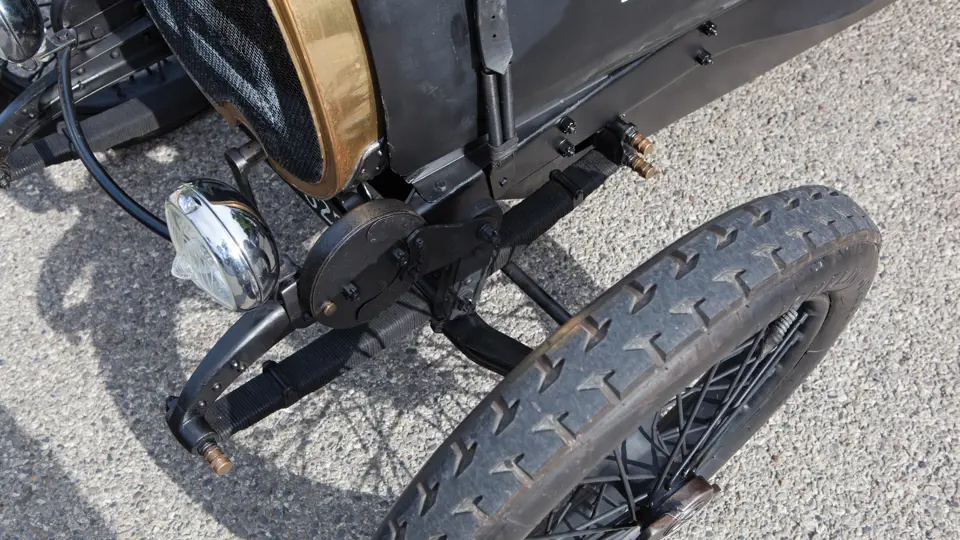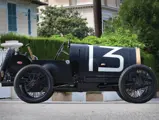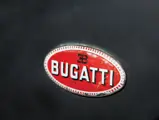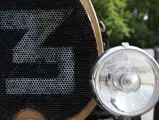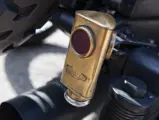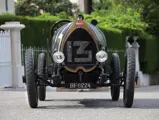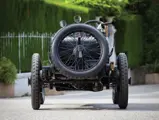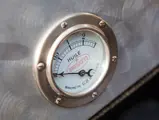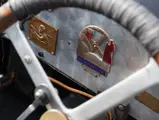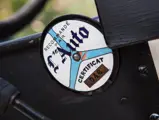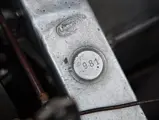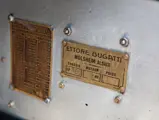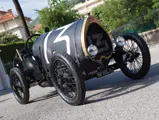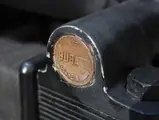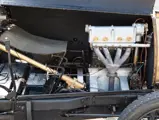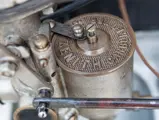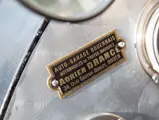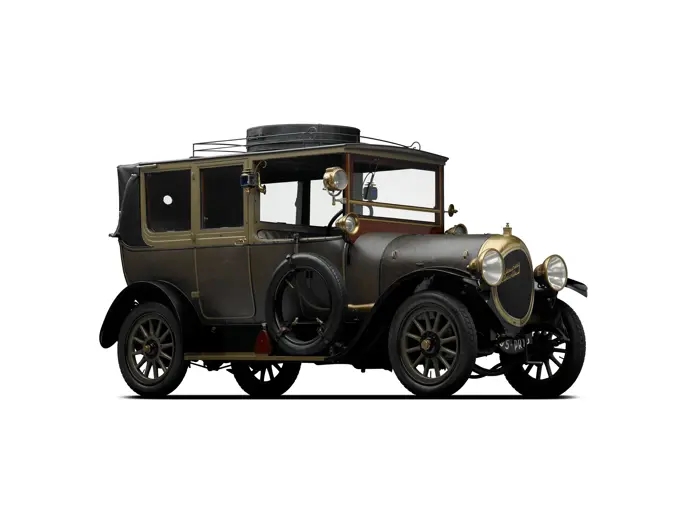50 bhp, 1,453 cc SOHC 16-valve inline four-cylinder engine with a single Zenith updraft carburettor, four-speed manual transmission, solid front axle with semi-elliptic leaf-spring suspension, solid rear axle with quarter-elliptic leaf-spring suspension, and rear-wheel mechanical drum brakes. Wheelbase: 2,000 mm
Ettore Bugatti’s first production pur sang, or “little thoroughbred”, was the lucky Type 13, which was a development of his original Type 10 prototype. Between 1910 and 1920, 435 of the original model and its derivatives were produced, and it was one of the first automobiles to be equipped with a four-valve cylinder head, which evolved on later models into an eight-valve and a racing 16-valve design. The latter was installed in five factory racing cars, which were built out of Type 13s that had survived World War I by being buried near Molsheim.
The Type 13 was light, quick, and a true sportsman’s automobile, in the fashion that would come to define such later Bugattis as the Type 37 and 35B. It marked the evolution of Bugatti’s ideas from voiturette to true sports car, and as such, survivors are treasured by collectors of Molsheim’s finest. Particularly desirable are the well-sorted and often driven examples owned by enthusiasts, of which the car offered here is one, and it has been owned and enjoyed by some of the best-known modern “Bugattistes”.
CHASSIS NUMBER 981
The history of Bugatti chassis number 981 has been well tracked by respected Bugatti historian David Sewell. Sewell notes that factory records show this chassis and engine number 538 as having been completed as a Type 23/27 with a 2,550-millimetre wheelbase chassis and a 16-valve racing engine on 2 August 1920. It was then invoiced on 14 August and shipped on 5 September 1920 to Louis Pabanel, of Paris. Per a contractual agreement between Pabanel and Bugatti, this was one of about fifty chassis marketed by the Parisian as Diatto-Bugattis, as they featured rectangular Diatto radiators and firewalls.
By June 1922, the Diatto-Bugatti was registered in Marseilles, France, as 2775 M 2, a number which it retained after relocating to Draguignan in September 1926. On 16 October 1928, it was sold to Edmond Autran, of Toulon, France, who registered it as 291 YU. The last known French owner was named Pesnin.
In the early 1960s, the Bugatti appeared stateside in the ownership of Weerte Ley, of Cleveland, Ohio. A decade later, it was acquired by renowned “ferreter” of old cars Ben Paul Moser, who listed it in the 1978 American Bugatti Register as a Type 22/23 with a two-passenger roadster body and wings, but no registration number was recorded.
By 1989, the car had made its way to Japan, where it was owned by renowned collector of vintage sports cars Yoshiyuki Hayashi, who listed it in the Japanese Bugatti Register in 1995. Later that year, the car returned to the U.S.A., where it was owned by Rick Rawlins and Leo Keoshian, the American Bugatti Club archivist.
By the time of the car’s arrival back in the United States, the Bugatti had its chassis frame shortened to Type 13 specifications. Sewell nonetheless noted in a letter to the current owner in April 2013 that the car “has an original Bugatti chassis frame which is unquestionably that of chassis number 981 produced in 1920. Its engine is equally unquestionably engine number 538, which is the original fitment to chassis number 981, as confirmed by the factory records. Furthermore, it is fitted with gearbox number 488, which the same records confirm was the original to chassis number 981”.
The engine was rebuilt for Mr Keoshian by David Wallace, of Phil Reilly & Company, the renowned Bugatti facility in California, and during this process, he used the original block with improved internal components. A new racing body was crafted by John Buddenbaum, which was upholstered in genuine elk hide and decorated with period motoring badges and a large hand-painted “13”, recalling the Type 13 that secured an important victory at Brescia.
It is in this form, modified but unquestionably highly authentic, that the car is offered today. This is also the form in which Mr Keoshian drove the Type 13 extensively, participating in Bugatti rallies throughout Europe and in the United States and even racing at the Monterey Historics on six different occasions! Continuing that tradition, the current owner has received its FIVA Identity Card and has taken advantage of it to participate in the Mille Miglia Retrospective in May 2013. It would undoubtedly be an absolute thrill to drive on any number of other vintage motoring events all over the world, with its bare-bones, open-air carriage providing wind-in-your face, elemental thrills.


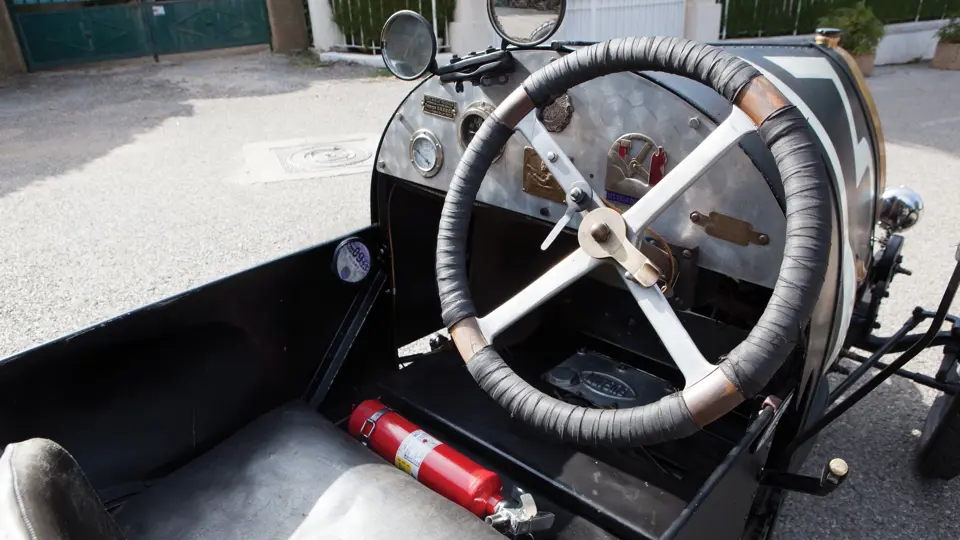

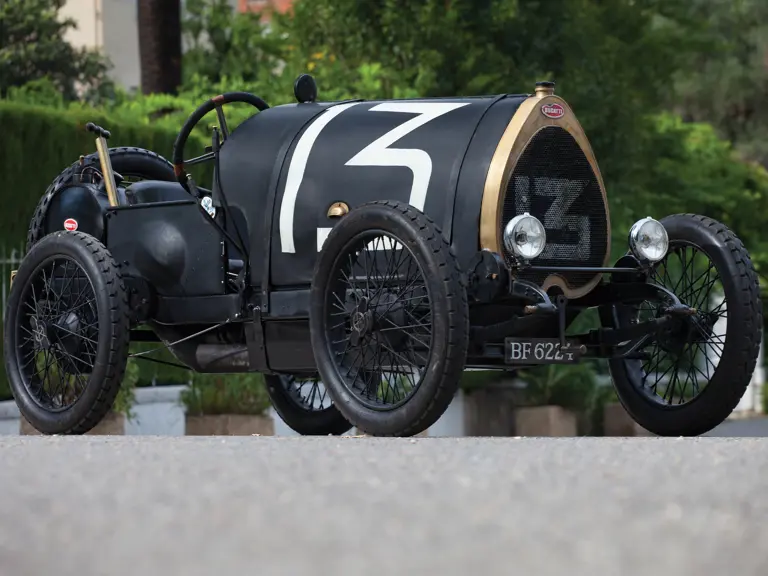
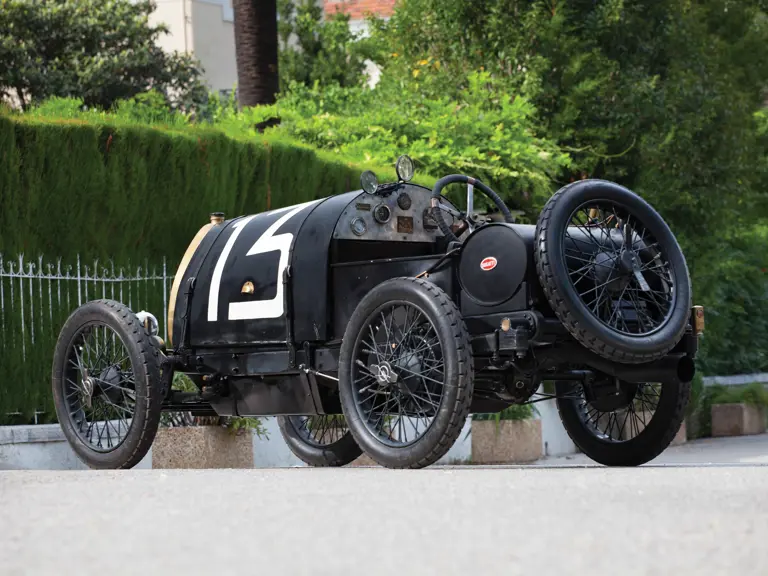
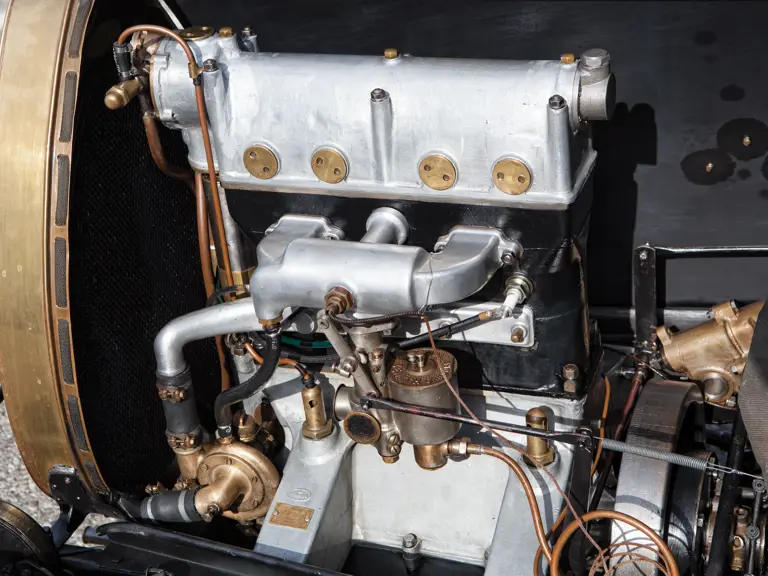


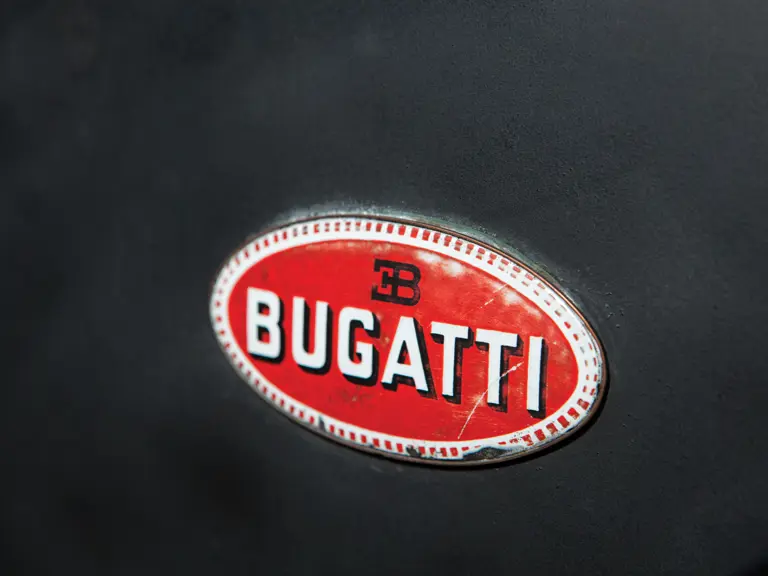

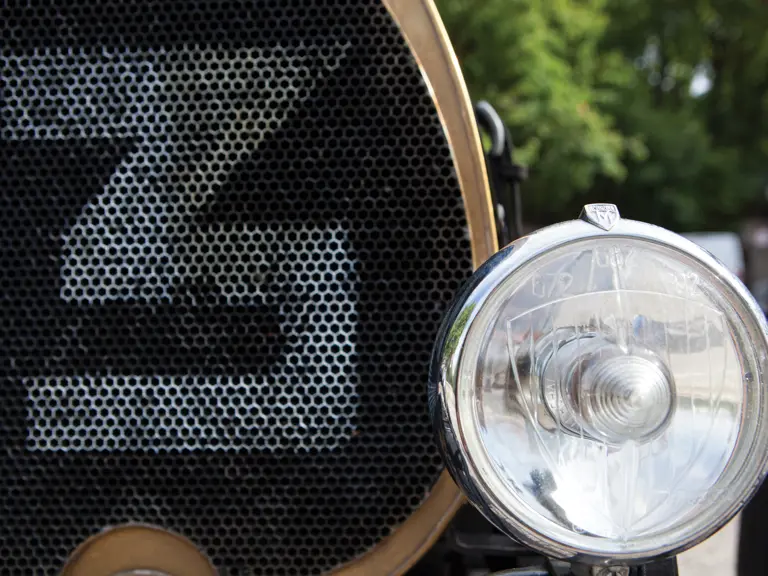

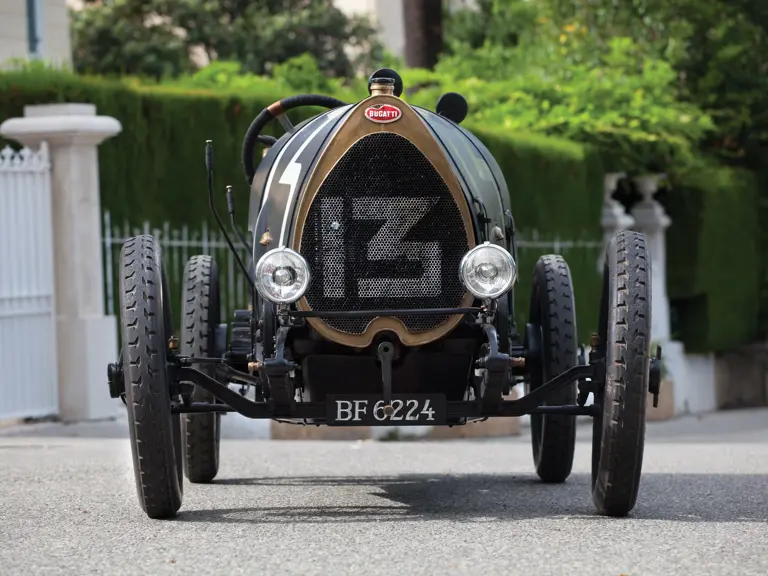
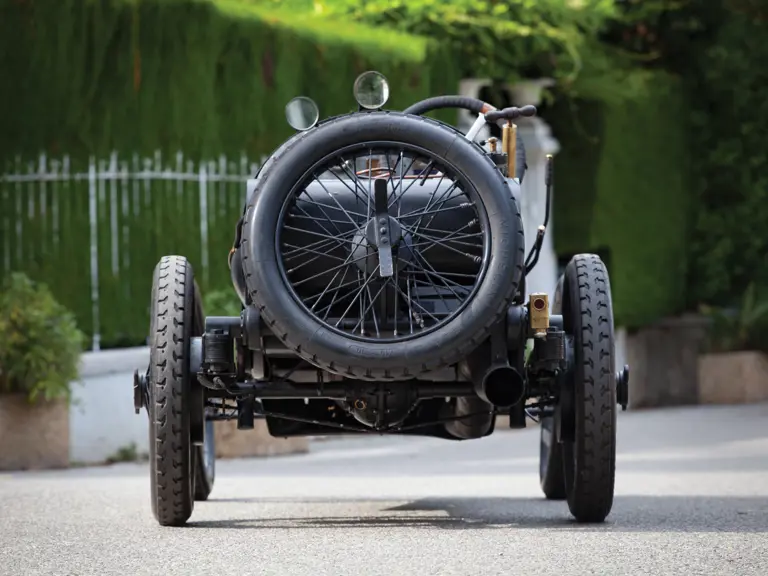
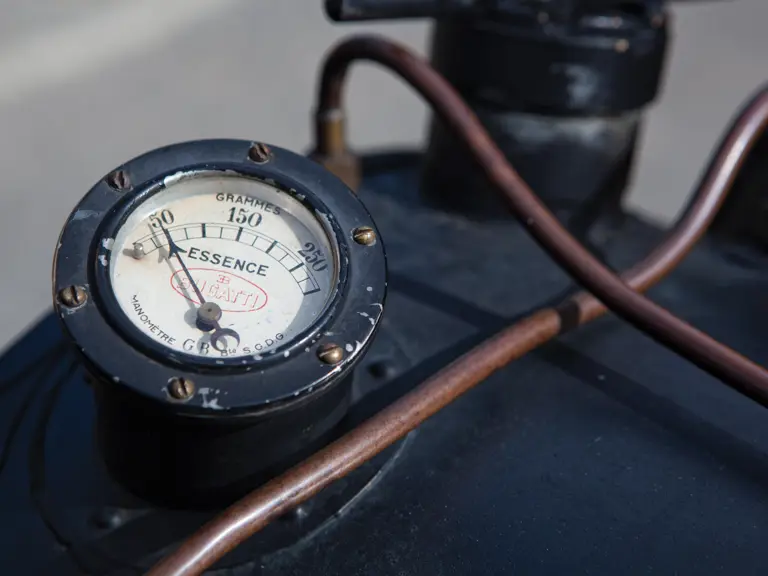
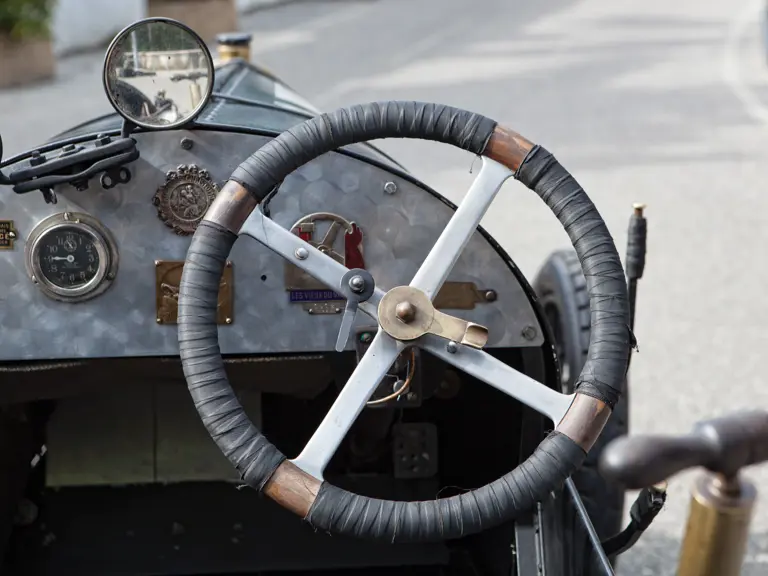
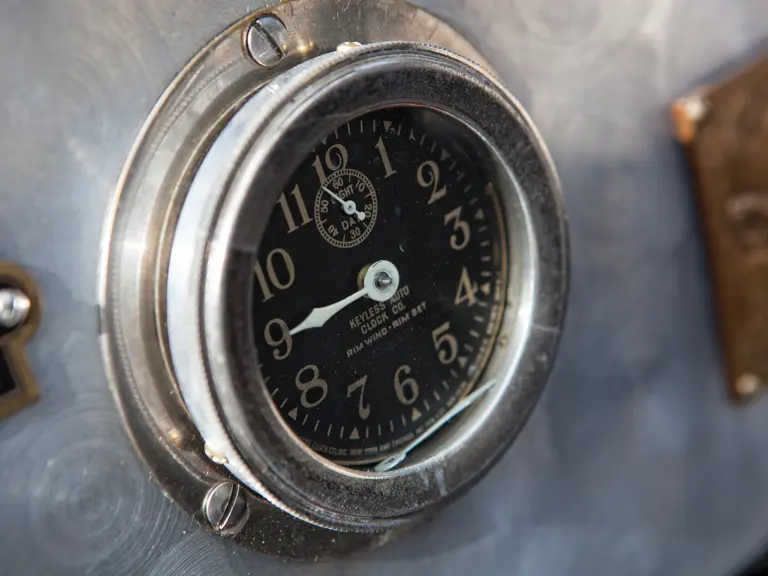

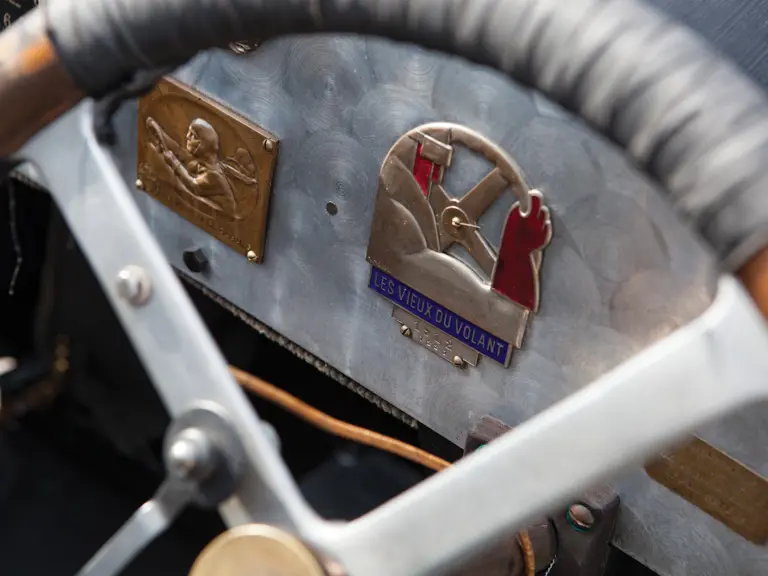
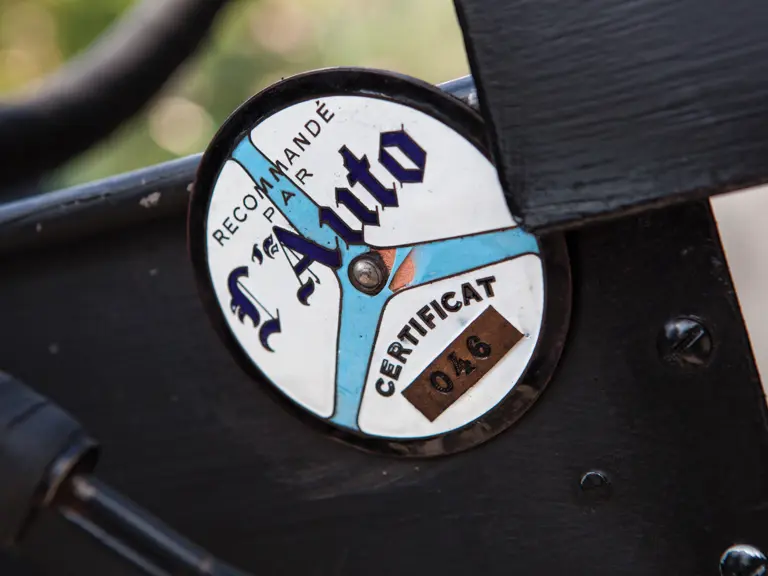
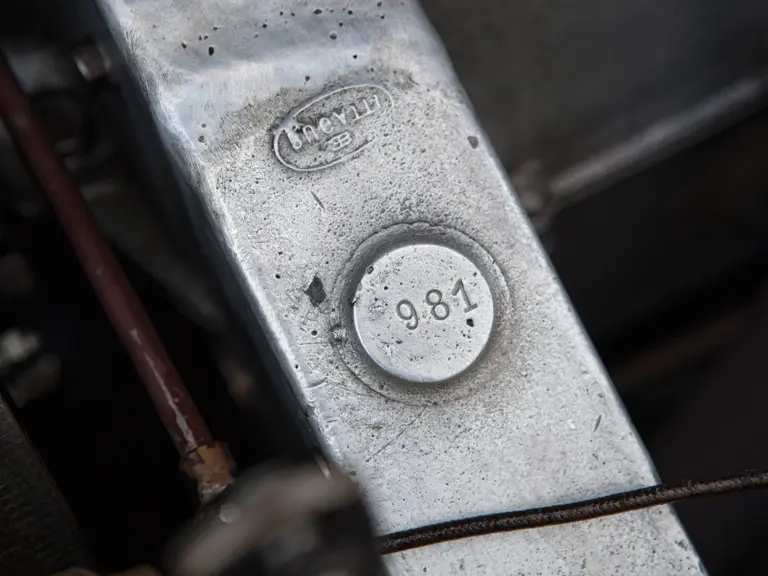
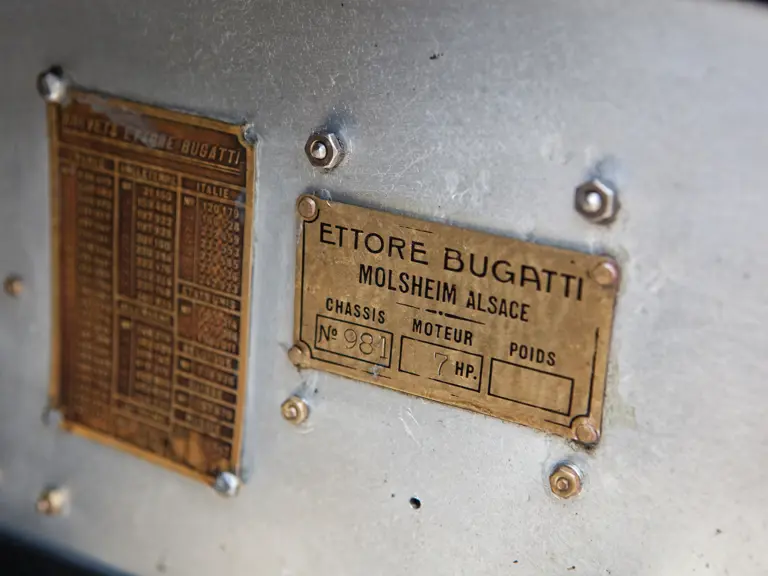
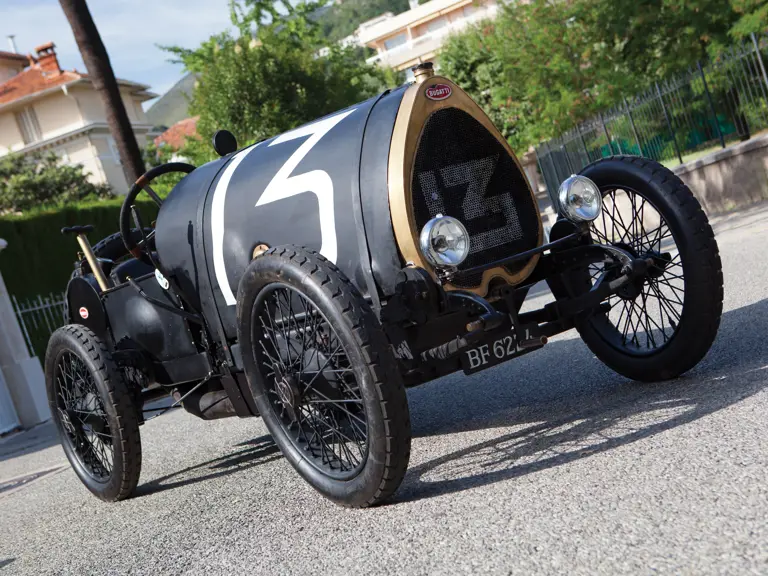
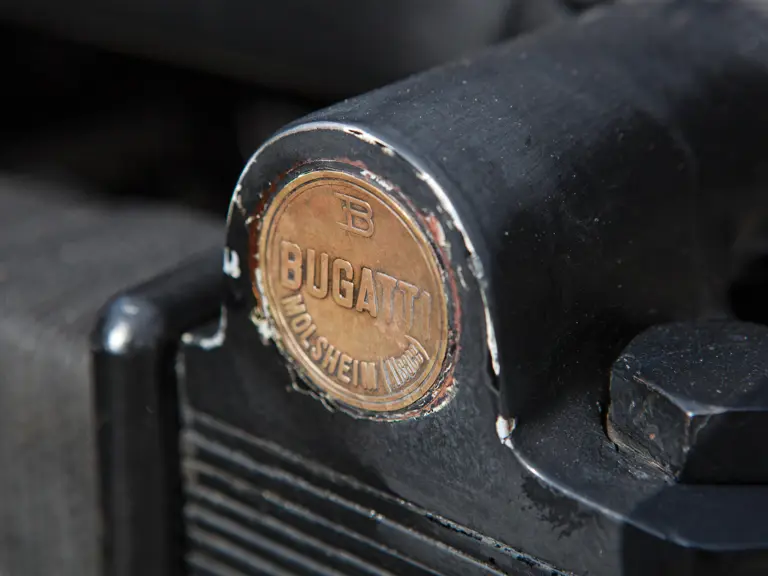
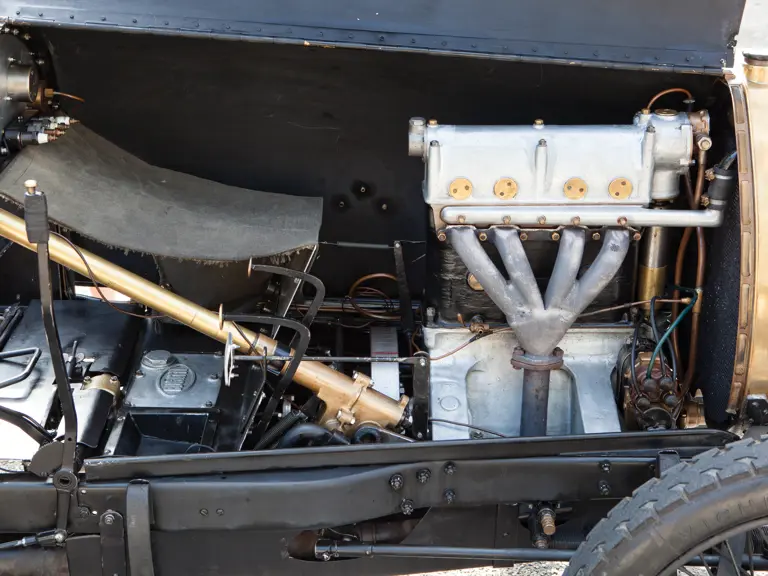

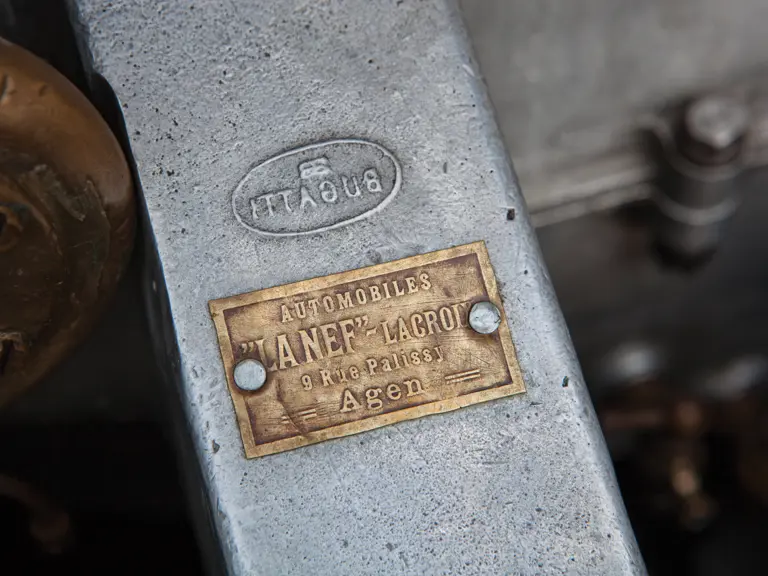
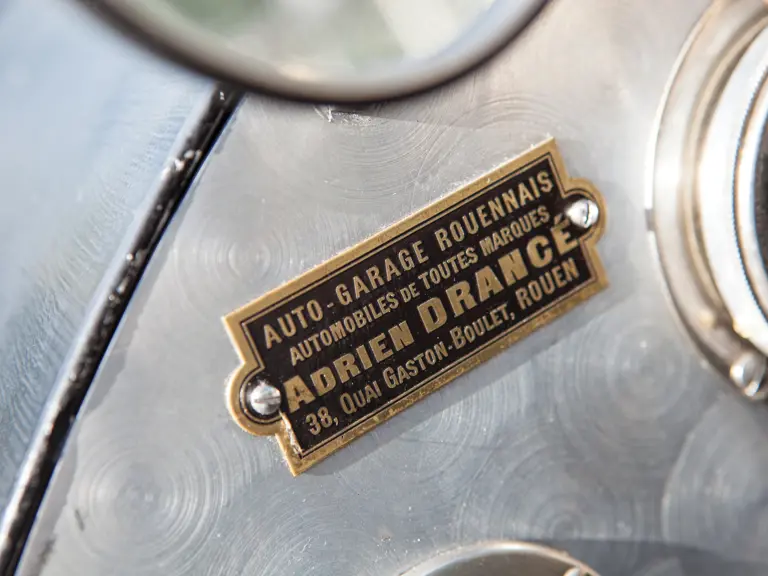

 | London, United Kingdom
| London, United Kingdom
